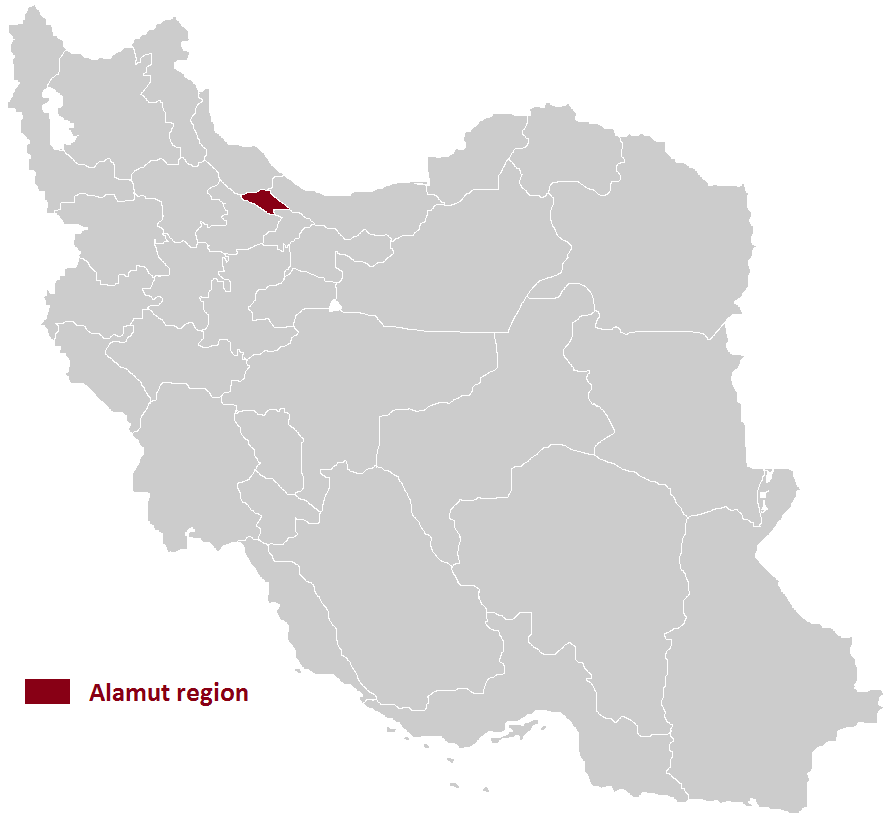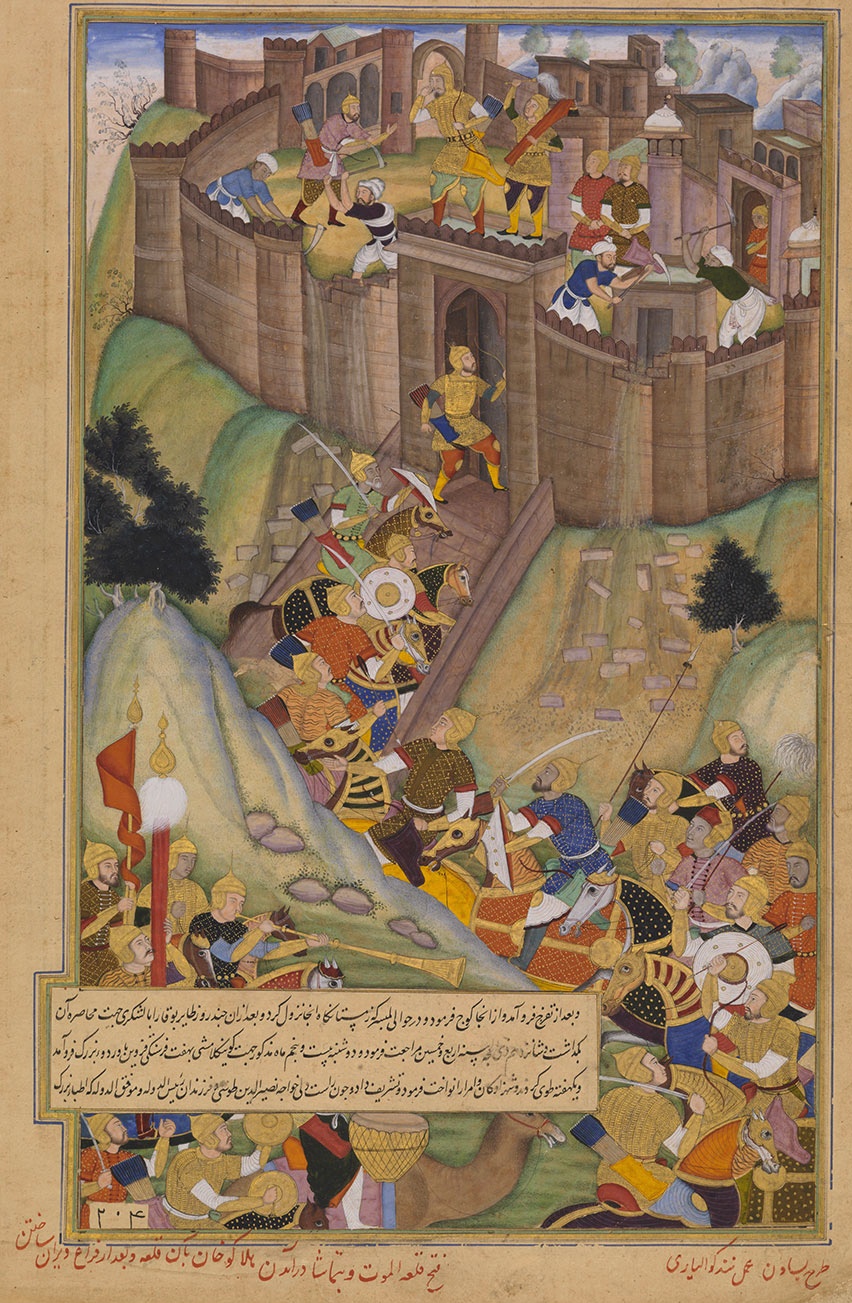|
List Of Ismaili Castles
List of the strongholds or dar al-hijra of the Order of Assassins in Persia (Iran) and Syria. Most of the Persian Ismaili castles were in the Alborz mountains, in the regions of Daylaman (particularly, in Alamut and Rudbar; north of modern-day Qazvin) and Quhistan (south of Khurasan), as well as in Qumis. Most of the Syrian Ismaili castles were in Jabal Bahra' (Syrian Coastal Mountain Range). According to Juzjani, before the Mongol invasion the Assassins possessed 70 forts in Quhistan and 35 in Alamut. Overall, they probably had 250 castles. The Ismaili fortresses in Rudbar of Alamut had been built on rocky heights and were equipped to withstand long sieges; they had storehouses with high capacities and elaborate water supply infrastructure such as cisterns, qanats, and canals.B. Hourcade, “ALAMŪT,” Encyclopædia Iranica, I/8, pp. 797-801; an updated version is available online at http://www.iranicaonline.org/articles/alamut-valley-alborz-northeast-of-qazvin- (access ... [...More Info...] [...Related Items...] OR: [Wikipedia] [Google] [Baidu] |
Alamut
Alamut () or Rudbar () is a region in Iran including western and eastern parts on the western edge of the Alborz (Elburz) range, between the dry and barren plain of Qazvin in the south and the densely forested slopes of the Mazandaran province in the north. Starting from Qazvin toward Alamut, passing through the first range of hills, curvatures, forms, are significant themes in nature's composition of this area. The famous Ismaili castle of Alamut and numerous others are in this area, which served as the heartland of the state founded by Hassan-i Sabbah. According to some sources, the majority of people in northern Qazvin (Alamut) are Tats who speak a dialect of the Tati language.گونههای زبانی تاتی، دونالد استیلو، ۱۹۸۱ However, other sources claim that the majority of people in Alamut are Mazanderani or Gilaks who speak a dialect of the Mazanderani language or Gilaki language. According to some linguists, the term ‘Tati’ was ... [...More Info...] [...Related Items...] OR: [Wikipedia] [Google] [Baidu] |
Alamut Castle
Alamut (, meaning "eagle's nest") is a ruined mountain fortress located in the Alamut region in the South Caspian Sea, Caspian, near the village of Gazor Khan in Qazvin Province in Iran, approximately 200 km (130 mi) from present-day Tehran. In 1090 AD, the Alamut Castle, a mountain fortress in present-day Iran, came into the possession of Hassan-i Sabbah, a champion of the Nizari Isma'ilism, Nizari Ismaili cause. Until 1256, Alamut functioned as the headquarters of the Nizari Ismaili state, which included a series of List of Ismaili strongholds, strategic strongholds scattered throughout Persia and Syria, with each stronghold being surrounded by swathes of hostile territory. Alamut, which is the most famous of these strongholds, was thought impregnable to any military attack and was fabled for its heavenly gardens, library, and laboratories where philosophers, scientists, and theologians could debate in intellectual freedom. The stronghold survived adversaries includin ... [...More Info...] [...Related Items...] OR: [Wikipedia] [Google] [Baidu] |
Maymun-Diz
Maymūn-Diz () was a major fortress of the Nizari Ismailis of the Alamut Period described in historical records. It has been variously identified with the Alamut Castle, Navizar Shah Castle, Shirkuh Castle, Shahrak Castle, and Shams Kalayeh Cave. Recently, Enayatollah Majidi located it on top of Mount Shatan ( ''Kūh-e Shātān''; ) near Khoshk Chal. The fortress was surrendered by Imam Rukn al-Din Khurshah, who was residing there, to the invading Mongols under Hulagu Khan and was subsequently demolished. This was followed by surrender of Alamut and almost all other strongholds and the disestablishment of the Nizari state. History The date of the (beginning of the) construction by the Nizari Ismailis is variously given as 1097 (per ''Jami' al-tawarikh''), 1103 (per '' Zubdat al-Tawarikh''), and during the Imamate of Ala al-Din Muhammad (1211–1255) (per ''Tarikh-i Jahangushay''). The fortress was on a great spur of rock rising almost vertically from the valley. Its ramp ... [...More Info...] [...Related Items...] OR: [Wikipedia] [Google] [Baidu] |
Ghale Rud Khan
Ghale is an ethnic group in Nepal with a unique cultural heritage and language, which serves as a significant aspect of their identity and social cohesion within the community. The preservation of their language and cultural traditions is crucial in understanding and celebrating the rich diversity that contributes to the tapestry of Nepal's ethnic landscape. Geographic distribution The Central Bureau of Statistics of Nepal classifies the Ghale within the broader social group of Mountain/Hill Janajati. At the time of the 2011 Nepal census, 22,881 people (0.1% of the population of Nepal) were Ghale. The frequency of Ghale by province was as follows: * Bagmati Province (0.3%) * Gandaki Province (0.3%) * Koshi Province (0.0%) * Lumbini Province (0.0%) * Madhesh Province (0.0%) * Sudurpashchim Province (0.0%) * Karnali Province (0.0%) The frequency of Ghale was higher than national average (0.1%) in the following districts: * Manang (7.1%) * Rasuwa (2.4%) * Dhading (2.0%) * Gorkha (1. ... [...More Info...] [...Related Items...] OR: [Wikipedia] [Google] [Baidu] |
Rudkhan Castle
Rudkhan Castle (; ), also Roodkhan Castle, is a brick and stone medieval fortress in Iran that was built to defend against the Arab invaders during the Muslim conquest of Persia. With the fall of the Sasanian Empire, this area became a defensive position against the Arabs in the then-newly established Tabarestan. Located 25 km southwest of Fuman city north of Iran in Gilan province, it is a military A military, also known collectively as armed forces, is a heavily armed, highly organized force primarily intended for warfare. Militaries are typically authorized and maintained by a sovereign state, with their members identifiable by a d ... complex which was constructed during the Sasanian era (224-651), and later rebuilt in 1096 by the Nizari Isma'ilis for use by the Assassins. The castle is built on two tips of a mount, with an area of . The Rudkhan Castle River originates in the surrounding heights and flows from south to north. Rudkhan Castle sits at the two pea ... [...More Info...] [...Related Items...] OR: [Wikipedia] [Google] [Baidu] |
Kiya Buzurg-Ummid
Kiyā Buzurg-UmmīdTransliteration based on Classical Persian, as the subject of the article lived in the 1100's. In modern Iranian Persian, this would be transliterated as some variation of Kiyâ Bozorg-Omid. (; died 1138) was a '' dāʿī'' and the second ruler (''da'i'') of the Nizari Isma'ili State, ruling Alamut Castle from 1124 to 1138 CE (or 518—532 AH). He was of Daylami origin from the region of Rudbar. Career Prior to ruling the Nizari Isma'ilis, Buzurg Ummid captured Lambsar Castle for the Assassins and ruled it as commander for over twenty years. As the ruler of Alamut On 25 Rabīʿ II 518 (11 June 1124), a day before death of Ḥassan-i Ṣabbaḥ, Ḥassan appointed him his successor. He generally followed the policies of Ḥassan-i Ṣabbaḥ and enforced the Sharia strictly. In his early reign the Isma'ili hold was expanded in particular in Eshkevar and Taleghan. As opposed to Hassan Sabbah, who is depicted as a revolutionary leader, the Ismaili sources ... [...More Info...] [...Related Items...] OR: [Wikipedia] [Google] [Baidu] |
Lambesar 2000
Lambsar (, also pronounced Lamsar), Lamasar, Lambasar, Lambesar () or Lomasar () was probably the largest and the most fortified of the Ismaili castles. The fortress is located in the central Alborz mountains, south of the Caspian Sea, about 120 km from present-day Tehran, Iran. Lambsar is to the northeast of Razmian village (the central district of Rudbar e Shahrestan). Kiya Buzurg Ummid (died 1138) captured the castle from Rasamuj and rebuilt it into a major stronghold using local labour. He was appointed by Hassan-i Sabbah (died 1124) as its governor. Only ruins remain of this magnificent fortress today. Very deep valleys surrounding the fortress make it impossible to access from the East and West sides. The North and South fronts are the only possible ways to get into the fortress. Although the slope of the mountain with a difference of 150m on both levels is stretched from north to south with a length of 480m, the castle is more than 190m in width. The huge two-layer ... [...More Info...] [...Related Items...] OR: [Wikipedia] [Google] [Baidu] |
Kashmar
Kashmar (; ) is a city in the Central District of Kashmar County, Razavi Khorasan province, Iran, serving as capital of both the county and the district. Kashmar is near the river Shesh Taraz in the western part of the province, and south of the province's capital Mashhad, in Iran, from east to Bardaskan, west to Torbat-e Heydarieh, north to Nishapur, south to Gonabad. Until two centuries ago, this city was named Torshiz (). Demographics Population At the time of the 2006 National Census, the city's population was 81,527 in 21,947 households. The following census in 2011 counted 90,200 people in 26,445 households. The 2016 census measured the population of the city as 102,282 people in 31,775 households. Historical legends Kashmar is a city with ancient history and many legendary stories Among the historical legends are about the Cypress of Kashmar. Cypress of Kashmar The Cypress of Kashmar is a mythical cypress tree of legendary beauty and gargantuan dime ... [...More Info...] [...Related Items...] OR: [Wikipedia] [Google] [Baidu] |
Atashgah Castle2023-04-08 68
Atashgah or Ateshgah () may refer to: *Fire temple, a Zoroastrian worship place * Atashgah, Alborz, a village in Iran * Atashgah, Ardabil, a village in Iran * Atashgah-e Jadid, a village in Ardabil Province, Iran * Atashgah, Chaharmahal and Bakhtiari, a village in Iran * Ateshgah, Gilan, a village in Iran * Ateshgah-e Bozorg, a village in Kohgiluyeh and Boyer-Ahmad Province, Iran *Atashgah of Isfahan, a tower-like construction located in Iran * Ateshgah of Baku, also known as ''Fire Temple of Baku'', is a museum now in Baku Azerbaijan *Atashgah of Tbilisi The Atashgah, also transcribed as 'Ateshgah ( ka, ათეშგა, from , "fire temple") is an ancient Zoroastrian fire temple in Tbilisi, Georgia. It was built when Georgia was a part of Persian Empire in Sasanian era (224-651 AD). It is descr ..., also known as ''Fire Temple of Tbilisi'', is a museum now in Tbilisi Georgia * Atashgah Castle, a castle in the city of Kashmar * Atashgah Manmade-Cave, a Cave in the city of Kash ... [...More Info...] [...Related Items...] OR: [Wikipedia] [Google] [Baidu] |
Atashgah Castle
Atashgah Castle () is a famous Sasanian era castle in the city of Kashmar. Location This fort is one of the most prominent and superior ancient forts of Iran in terms of inaccessibility and resistance against invaders and easily competes with the fortifications of Babak Fort in Kaleybar and Alamut Castle in Alamut. This shows that the builders of the castle have carried out extensive field studies to locate it. In total, Atashgah Castle is built on a high rocky cliff and difficult to cross, three sides of which are high and dangerous precipices. Around this cliff, shortly after the precipices, the walls of other high cliffs have re-enclosed it in the form of impenetrable and inaccessible fortifications. See also * Atashgah Manmade-Cave * Sasanian Empire * Adur Burzen-Mihr Adur Burzen-Mihr (Middle Iranian) or Azar Barzin () was an ''Atash Behram'' (a Zoroastrian fire temple of the highest grade) located in Parthia. In the Sasanian period, it was one of the three Great F ... [...More Info...] [...Related Items...] OR: [Wikipedia] [Google] [Baidu] |



